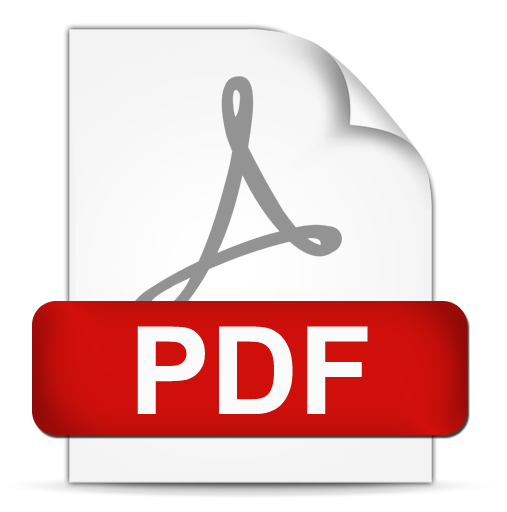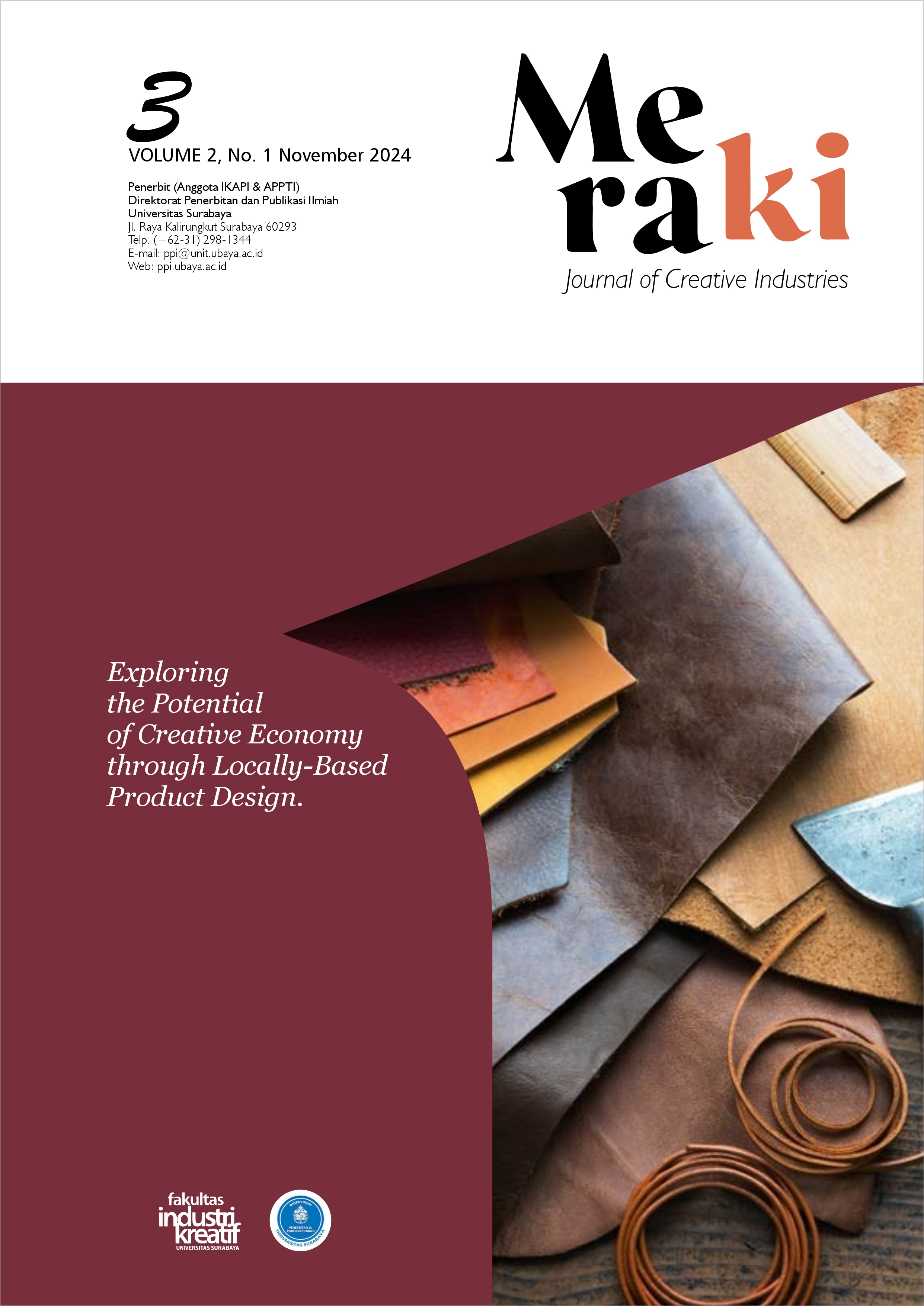Pemanfaatan Sisa Ampas Tebu Menjadi Aksesori Interior
 Abstract Views:
307 times
Abstract Views:
307 times
 PDF Downloads:
209 times
PDF Downloads:
209 times
Abstract
The large amount of bagasse that is not utilized and left to accumulate over a period of time will risk environmental pollution. Therefore, with the main objective of reducing the amount of bagasse that accumulates, researchers will utilize the remaining bagasse into products that have selling value as well as can create new business opportunities. For this reason, an experimental method will be used, with this method researchers can find out more about bagasse so that it can be used as a product. The experimental stages carried out begin with sorting, softening, separating, drying, coloring, pattern formation, and ending with finishing. In this experiment, it was found that the most effective shaping process using the bagasse powder pressing technique with wood glue produced a sturdy and rough-textured character. By considering the experimental results, the type of product to be made is an interior accessory consisting of three products, namely a mirror, wall clock, and tissue holder.
Downloads
References
V. C. Hananto, “Perancangan Desain Tas Berbahan Bonggol Jagung Dengan Citra Elegan Melalui Penelusuran Aktivitas Seorang Figur,” 2024.
N. Ungureanu, V. Vlăduț, dan S.-Ștefan Biriș, “Sustainable Valorization of Waste and By-Products from Sugarcane Processing,” Sustainability, vol. 14, no. 17, hlm. 11089, Sep 2022, doi: 10.3390/su141711089.
L. A. Rahmawati, “Studi Literatur Produksi Bioethanol dari Ampas Tebu dengan Metode Pyrolisis,” J. Enviscience, vol. 4, no. 1, hlm. 47, Mar 2020, doi: 10.30736/4ijev.v4iss1.131.
L. N. Palulun, “NILAI KUAT TEKAN BATAKO BERBAHAN ABU DAN SERAT AMPAS TEBU (ASAT),” 2020.
C. Angelo, A. P. Setiawan, J. F. Poilot, dan J. Siwalankerto, “Penelitian Ampas Tebu Sebagai Material Pembuatan Papan Unting,” vol. 7, no. 2, 2019.
M. B. Girsang, “Pemanfaatan Limbah Kulit Jagung menjadi Produk Fashion Aksesoris,” 2022.
R. K. Putra dan A. A. Susanti, Ed., Outlook Komoditas Perkebunan Tebu. Jakarta Selatan: Pusat Data dan Sistem Informasi Pertanian Sekretariat Jenderal - Kementerian Pertanian 2022, 2022.
C. Anam dan F. M. S. Agung, “EKSPERIMEN SISA PENGGILINGAN TEBU SEBAGAI TAS WANITA,” JADECS J. Art Des. Art Educ. Cult. Stud., vol. 6, no. 2, hlm. 128, Nov 2021, doi: 10.17977/um037v6i22021p128-137.
M. Anisya, Y. F. Andriana, dan H. Islamsyah, “Eksplorasi Limbah Ampas Tebu (Bagasse) untuk Material Produk Ecofashion,” vol. 4, no. 3, 2020.
P. A. Murtado, “Perancangan Desain Produk Meja Makan Menggunakan Limbah Tebu Dengan Konsep Space Saving,” 2020.
M. M. Zain, Seribu Manfaat Tanaman Tebu Inovasi Limbah Tebu yang Wajib Anda Ketahui. Yogyakarta: Deepublish, 2022. [Daring]. Tersedia pada: https://books.google.co.id/books?id=IDB-EAAAQBAJ&pg=PR8&dq=Seribu+Manfaat+Tanaman+Tebu+Inovasi+Limbah+Tebu+yang+Wajib+Anda+Ketahui&hl=id&newbks=1&newbks_redir=0&sa=X&ved=2ahUKEwjA9dPZ-LqCAxVqS2wGHVfzDmgQ6AF6BAgJEAI
N. L. L.-A. Amie dan A. Nugraha, “PEMANFAATAN LIMBAH AMPAS TEBU MELALUI DESAIN PRODUK PERLENGKAPAN RUMAH,” 2014.
Mirna, “PEMASARAN PRODUK AKSESORIS GAS PT. PHINISI MEGA USAHA KOTA PAREPARE (ANALISIS ETIKA BISNIS ISLAM),” hlm. 4, 2020.
J. Panero dan M. Zelink, Human Dimension and Interior Space. United States and Canada by Whitney Library of Design: Watson-Guptill Publications, 2014.
D. Arsetyasmoro, “Pengembangan Desain Asesoris Interior Dengan Metode Atumics di Sentra Batik Kayu Krebet Bantul, Yogyakarta,” vol. 10, no. 2, 2022.

This work is licensed under a Creative Commons Attribution-ShareAlike 4.0 International License.
- Copyright on articles is retained by the respective author(s), without restrictions. A non-exclusive license is granted to Keluwih: Jurnal Sains dan Teknologi to publish the article and identify itself as its original publisher, along with the commercial right to include the article in a hardcopy issue for sale to libraries and individuals.
- Articles published in Meraki: Journal of Creative Industries are licensed under a Creative Commons Attribution-ShareAlike 4.0 International license. You are free to copy, transform, or redistribute articles for any lawful purpose in any medium, provided you give appropriate credit to the original author(s) and the journal, link to the license, indicate if changes were made, and redistribute any derivative work under the same license.
- By publishing in Meraki: Journal of Creative Industries, authors grant any third party the right to use their article to the extent provided by the Creative Commons Attribution-ShareAlike 4.0 International license.

 DOI:
DOI:


